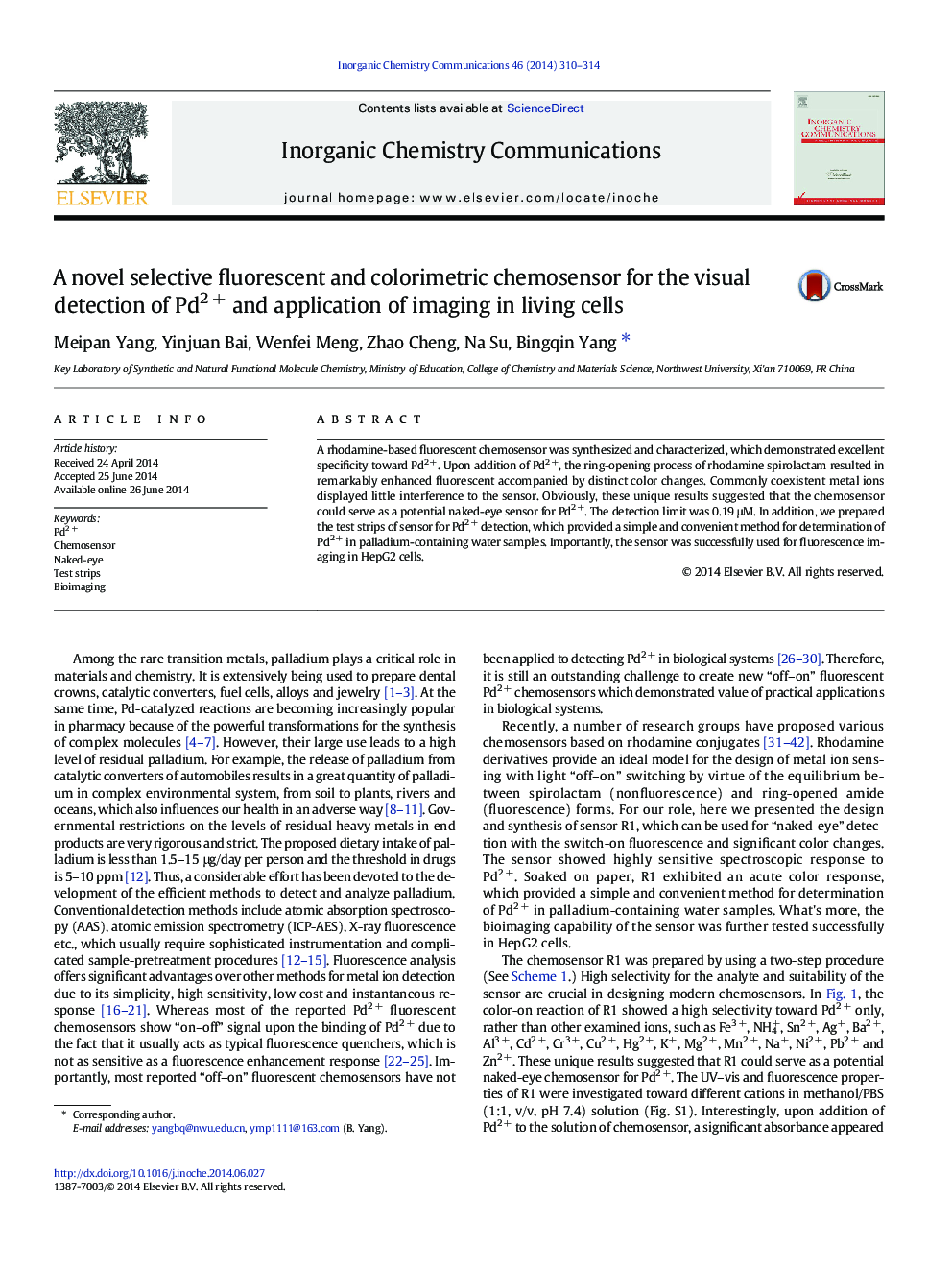| Article ID | Journal | Published Year | Pages | File Type |
|---|---|---|---|---|
| 1303618 | Inorganic Chemistry Communications | 2014 | 5 Pages |
•A selective chemosensor for Pd2 + with low detection limit was synthesized.•The chemosensor can be used for “naked-eye” detection.•We prepared the test strips of sensor for practical chromogenic Pd2 + detection.•The bioimaging capability of the sensor was tested successfully in HepG2 cells.
A rhodamine-based fluorescent chemosensor was synthesized and characterized, which demonstrated excellent specificity toward Pd2 +. Upon addition of Pd2 +, the ring-opening process of rhodamine spirolactam resulted in remarkably enhanced fluorescent accompanied by distinct color changes. Commonly coexistent metal ions displayed little interference to the sensor. Obviously, these unique results suggested that the chemosensor could serve as a potential naked-eye sensor for Pd2 +. The detection limit was 0.19 μM. In addition, we prepared the test strips of sensor for Pd2 + detection, which provided a simple and convenient method for determination of Pd2 + in palladium-containing water samples. Importantly, the sensor was successfully used for fluorescence imaging in HepG2 cells.
Graphical abstractA novel chemosensor for the visual detection of Pd2 + imaging in living cells.Figure optionsDownload full-size imageDownload as PowerPoint slide
